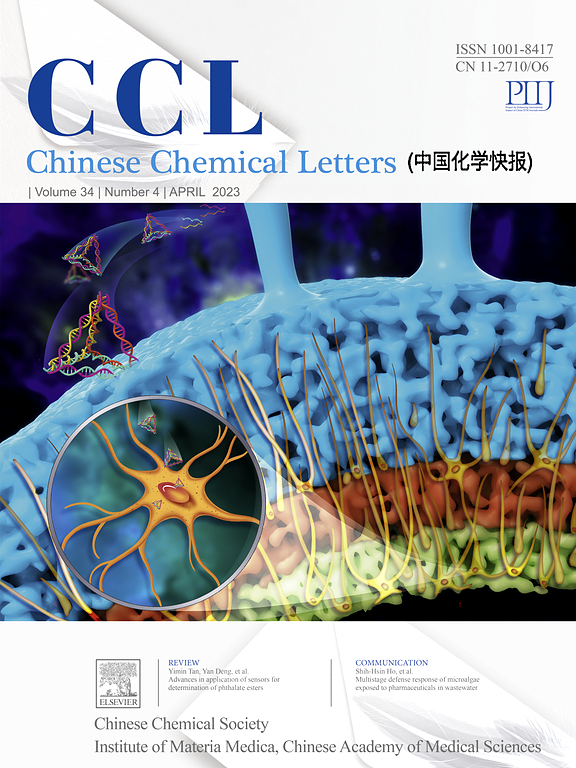Supramolecular-orchestrated carrier-free chemodynamic synergists with augmented oxidative damage for potentiated cancer therapy
IF 9.4
1区 化学
Q1 CHEMISTRY, MULTIDISCIPLINARY
引用次数: 0
Abstract
Metal ions trigger Fenton/Fenton-like reactions, generating highly toxic hydroxyl radicals (•OH) for chemodynamic therapy (CDT), which is crucial in inducing lethal oxidative DNA damage and subsequent cell apoptosis. However, tumor cells can counteract this damage through repair pathways, particularly MutT homolog 1 (MTH1) protein attenuation of oxidative DNA damage. Suppression of MTH1 can enhance CDT efficacy, therefore, orderly integrating Fenton/Fenton-like agents with an MTH1 inhibitor is expected to significantly augment CDT effectiveness. Carrier-free CuTH@CD, self-assembled through the supramolecular orchestration of γ-cyclodextrin (γ-CD) with Cu2+ and the MTH1 inhibitor TH588, effectively overcoming tumor resistance by greatly amplifying oxidative damage capability. Without additional carriers and mediated by multiple supramolecular regulatory effects, CuTH@CD enables high drug loading content, stability, and uniform size distribution. Upon internalization by tumor cells, CuTH@CD invalidates repair pathways through Cu2+-mediated glutathione (GSH) depletion and TH588-mediated MTH1 inhibition. Meanwhile, both generated Cu+ ions and existing ones within the nanoassembly initiate a Fenton-like reaction, leading to the accumulation of •OH. This strategy enhances CDT efficiency with minimal side effects, improving oxidative damage potency and advancing self-delivery nanoplatforms for developing effective chemodynamic tumor therapies.

求助全文
约1分钟内获得全文
求助全文
来源期刊

Chinese Chemical Letters
化学-化学综合
CiteScore
14.10
自引率
15.40%
发文量
8969
审稿时长
1.6 months
期刊介绍:
Chinese Chemical Letters (CCL) (ISSN 1001-8417) was founded in July 1990. The journal publishes preliminary accounts in the whole field of chemistry, including inorganic chemistry, organic chemistry, analytical chemistry, physical chemistry, polymer chemistry, applied chemistry, etc.Chinese Chemical Letters does not accept articles previously published or scheduled to be published. To verify originality, your article may be checked by the originality detection service CrossCheck.
 求助内容:
求助内容: 应助结果提醒方式:
应助结果提醒方式:


